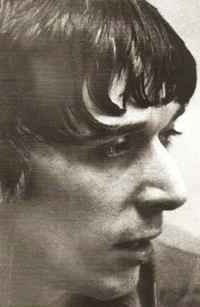

Timeline: 1968
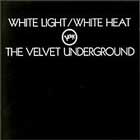
White Light/White Heat
In January The Velvet Underground release their second album White Light/White Heat, which includes the classic 17 minutes of musical mayhem of Sister Ray. Cale is at the organ, coming out on top at the end of the song, playing louder than the rest of the band:
"I kept everything low until a certain point then unleashed the volume I'd been saving."
Cale in UP-TIGHT: The Velvet Underground Story, the book by Victor Bockris & Gerard Malanga:
"Most of the recording was done straight through; Sister Ray was one piece. I Heard Her Call My Name and Here She Comes Now evolved in the studio. We never performed them live. The Gift was a story Lou had written a long time ago when he was at Syracuse University. It was my idea to do it as a spoken-word thing. We had this piece called 'Booker T' that was just an instrumental, so instead of wasting it, we decided to combine them."
The album was unrelenting, but it was also a last hurrah:
"[It] shows a different moral struggle between the creative ideas of a "no Nico" and the soon to be "no more experimentation". Raw unfettered nihilistic exploration on full display. There was so much more to be done."

The sessions were loud, which caused all kinds of problems. Sterling Morrison remembers:
"There was fantastic leakage 'cause everyone was playing so loud and we had so much electronic junk with us in the studio-all these fuzzers and compressors. Gary Kellgren, who is ultra-competent, told us repeatedly: "You can't do it - all the needles are on red." and we reacted as we always reacted: "Look, we don't know what goes on in there and we don't want to hear about it. Just do the best you can." And so the album is fuzzy, there's all that white noise...we wanted to do something electronic and energetic. We had the energy and the electronics, but we didn't know it couldn't be recorded...what we were trying to do was really fry the tracks."
Cale had high praise for producer Tom Wilson, who somehow made it work.
"The band never again had as good a producer as Tom Wilson."
Cale debuts as a singer on record, reciting The Gift and Lady Godiva's Operation. This is the last original Velvets album with Cale.
Recording at A&R Studios in New York
Cale performs on Stephanie Says (viola, celesta, backing vocals) and Temptation Inside Your Heart (bass, backing vocals) during recording sessions in February 1968 at A&R Studios in New York. Both songs are released on VU, an album with Velvets outtakes, in 1984.
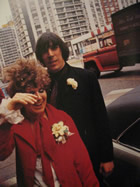
Marries Betsey Johnson
Marries Betsey Johnson, a fashion designer, in April. They became an item shortly after the Velvets performed at the Paraphernalia Store in New York in March. She made the elegant dark stage clothes for the band:
"My aesthetic at the time was all black - black waistcoat, black turtleneck, black pants, and that was my comfort range. Then Betsey came along and - "Hey, velvet! Oh, man, yeah, I'd like to get some velvet!" She made herself a pinstripe suit, and I said, "Can I have a pinstripe suit?" "No, you can't have a pinstripe suit." "All right, well, can I have a black velvet suit, please?" "Yes.""
"Betsey took amphetamine every day-diet pills, black bombers. She was a little overweight and very sensitive about it, and she would sit up all night making clothes. Betsey was a strong individual character. When she started showing up at all the VU gigs because she could afford to, I really admired her.It seemed to me that Betsey knew everybody I knew, and she was living at the Chelsea Hotel. It was a match made in heaven."
"I liked Betsey because of the energy she had. Here was somebody who was really alive, a sparkling personality, and also generous. She was doing in fashion what we were doing in music."
The wedding had to be postponed, because Cale had come down with hepatitis and had to spend several weeks in the hospital. Lou Reed acted as his best man. Factory photographer Billy Name took the pictures.
The bride got turned away from City Hall in New York at first, because she was wearing pants. She returned for the wedding in a micro-mini. The couple got an offer from the Ladies Home Journal to pay for the wedding. Betsey Johnson:
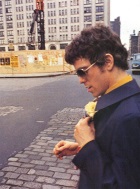
"I must have established some kind of something for myself at Paraphernalia, the press was really great. Ladies Home Journal found out we were getting married and was going to pay for this huge bash. They just wanted to be there and photograph the freaky little rock 'n' roll scene wedding ceremony and party even through we did it at City Hall. It was all set up and we had all the wedding invitations printed and they were all set to go to the mailbox and the day that they were supposed to go in the mail John was turning bright yellow! He went to the hospital and I said, 'Well, dear, when shall I mail these out? I'll wait for you to get your blood test.' He didn't even leave the hospital. He went straight into quarantine with hepatitis and a non-existent liver... Ladies Home Journal was so outraged that they wanted me to go on with the whole wedding, go to City Hall, no John and they they said, 'Well later we'll take a picture of John and strip him in!"
In March 1969 Cale and Betsey Johnson file for divorce, which is finalized in 1971.
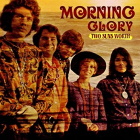
Morning Glory
Engineers the Two Suns' Worth album by Californian psychedelic quartet Morning Glory. It is his first studio job.
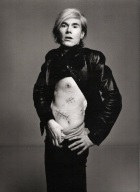
Andy Warhol shot by Valerie Solanis
Valerie Solanis, the author of the radical feminist SCUM Manifesto, shoots Andy Warhol in the Factory, June 4. She had accused of Warhol of stealing her play. Art critic Mario Amaya was also shot in the incident and suffered minor injuries. Warhol never fully recovers from his wounds.
The shooting is the subject of the song I Believe on the Songs for Drella album.
Cale also contributed the I Shot Andy Warhol Suite to the soundtrack of the 1996 film I Shot Andy Warhol.
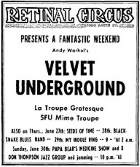
Taking a fall in Vancouver
He falls from the 15-foot stage during a run of shows by The Velvet Underground at Retinal Circus in Vancouver, Canada (June 27-30) and breaks his wrist, forcing him to play the remainder of the gigs with a cask.
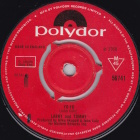
Producing Larry and Tommy
Co-produces (with jazz trumpet player Mike Apatoff) the A-side of a 45 rpm 7" single Yo-Yo b/w You've Gotta Bend A Little by this rhythm & blues duo.
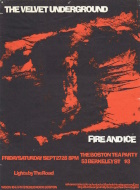
Last gigs with the Velvets in Boston
On September 27 and 28 Cale plays his last gigs with The Velvet Underground at the Boston Teaparty in Boston.
Reed had made an ultimatum to Tucker and Morrison. Either exit Cale, or the Velvets would cease to exist as a band. Maureen Tucker, looking back:
"When John left, it was really sad. I felt really bad. And of course, this was gonna really influence the music, 'cause, John's a lunatic (laughs). I think we became a little more normal, which was fine, it was good music, good songs, it was never the same though.It was good stuff, a lot of good songs, but, just, the lunacy factor was... gone."
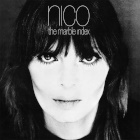
Nico's "The Marble Index"
Arranges and plays all the instruments on the Nico album The Marble Index. It is released in November
The album is reissued on CD in 1991 with two bonus tracks mixed by Cale in 1990: Roses in the Snow and Nibelungen. The latter is also released on his Dance Music album for the ballet about the singer in 1998.
"The songs were ready in Nico's head. All we had to do is get her in the studio and try to seperate the vocals from the harmonium. The whole modus operandi for the arrangments was that I would do track after track of instrumentation, and every one would be totally different from the previous one. Then you'd play all of them together and make sense of what was left. What you had really was four separate, independent parts. It was kind of a compositional technique, making sure you didn't write conjunctive string parts. They were always working against each other. Each take, you didn't have any idea of the centre of the song. They had an implied core, and then a real core."
Looking back in an interview with TapeOp:
"I went at it with an engineer [John Haeny] that really took it on. We had piles of instruments in there. I wanted this. I wanted that. It worked. As soon as that happened, then the Nico vocals fit in nicely and I knew which ones would do what and how, as well as how abstract I could be with the musical ideas. I was lucky to have Jac Holzman as the boss of Elektra [Records]. When I took the first records of The Marble Index in to Jac, left them there for him, and came back later, the first thing he said to me was, "You know, I really like that record." I thought, "This guy's nuts. Are you serious?" It was worth it to have that camaraderie about the music. He was really into the music. That was very important."
An expanded and remastered version of the album can be found as part of The Frozen Borderline 1968-1970 2CD (2007).